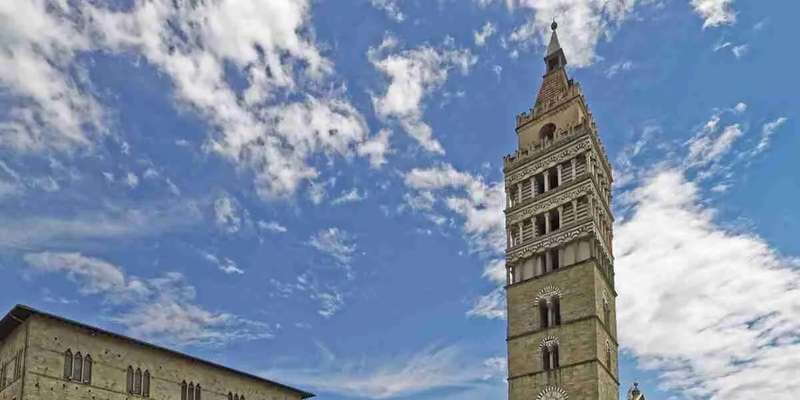- Home
- Useful Tips
- Discovering Pistoia's art treasures
Over 80% of Tuscan art lovers bypass Pistoia for Florence, missing a medieval treasure trove where Renaissance masters quietly revolutionized art. The frustration is real – guidebooks overflow with generic Florence tips while Pistoia's Ospedale del Ceppo terracottas and San Giovanni Fuorcivitas pulpit stand crowd-free, their stories untold. Visitors waste precious vacation time deciphering obscure opening hours or walking past unmarked masterpieces, unaware that this compact town holds Italy's best-preserved Romanesque baptistery. Unlike Florence's elbow-to-elbow Uffizi experience, Pistoia offers intimate encounters with della Robbia ceramics and Pietro Lorenzetti altarpieces, if you know where to look. The anxiety of missing authentic artistic discoveries grows as you watch tour buses speed toward more famous destinations, leaving you wondering what cultural riches remain hidden behind unassuming medieval facades.


Decoding Pistoia's confusing art opening hours
Nothing deflates an art pilgrimage faster than arriving at Pistoia's Civic Museum to find it closed for a midday break you never knew existed. These aren't the standardized Florence museum hours you're accustomed to – local institutions follow centuries-old traditions with 12:30-3:30pm closures and random Monday shutdowns. The secret lies in the 'orario continuato' signs indicating all-day openings, a system even seasoned travelers miss. For the Baptistery of San Giovanni, always verify the sacristan's availability – this 14th-century marvel operates on ecclesiastical time, not tourist schedules. Savvy visitors coordinate around the golden 10am-12pm window when all major sites align their hours, letting you transition seamlessly from the Cathedral's silver altarpiece to Palazzo dei Vescovi's underground Roman road. Don't trust generic online listings; the tourist office near Piazza del Duomo updates daily handwritten notices with last-minute changes even Google doesn't show.
Locals' shortcut to Pistoia's underrated masterpieces
While crowds cluster around the obvious Duomo highlights, Pistoians whisper about Cappella del Tau's complete 14th-century fresco cycle glowing in a former hospice. This is where true art discovery happens – in unassuming spaces like Sant'Andrea's pulpit by Giovanni Pisano, considered the precursor to Renaissance sculpture. The trick? Follow the 'Pistoia Blues Festival' route past tourist spots to find lesser-known marvels. At San Bartolomeo in Pantano, run your fingers along the ancient pilgrims' graffiti on columns while studying the recently restored crucifix. For contemporary surprises, the Marino Marini Museum hides in a deconsecrated church with avant-garde works by Pistoia's most famous modern artist. These hidden connections reveal why art historians call Pistoia 'Tuscany's sketchbook' – the experimental works here later inspired Florentine masters. A well-planned route covering just 1.5 square kilometers can showcase seven centuries of artistic evolution without retracing your steps.
Budget secrets for experiencing Pistoia's art like a Medici
That €20 Florence museum pass won't help here, but Pistoia's art rewards the thrifty. First Sunday of the month? All civic museums free – including Palazzo Fabroni's contemporary collections. Students with ID get 50% off at the Cathedral complex, where the €3 supplement reveals the Treasury Room's Byzantine ivories. The real hack? The €12 cumulative ticket covering five major sites valid for 72 hours, purchasable at the lesser-visited San Leone branch office with no queue. For free wonders, study the medieval symbolism in Piazza della Sala's well before ducking into Chiesa della Madonna to see the miraculously preserved 13th-century Madonna dell'Umiltà. Evening apertures in summer transform visits – the Baptistery's geometric marble patterns glow under sunset light for €2 less than daytime admission. Locals know the best free viewing is actually outside: Palazzo Comunale's nighttime illumination turns its facade into an open-air gallery of heraldic art.
Avoiding Pistoia's subtle art etiquette missteps
That innocent camera flash could damage 700-year-old pigments in San Domenico's frescoes – Pistoia's unstaffed churches rely on visitor awareness. Unlike Florence's monitored museums, these sacred spaces operate on trust. The golden rule? If lighting seems dim, photography is likely prohibited to preserve works like the Visitation lunette in San Giovanni Fuorcivitas. Dressing appropriately matters beyond the Duomo; even small chapels like Sant'Andrea maintain dress codes locals respect silently. When examining the Ospedale del Ceppo's della Robbia frieze, maintain respectful distance – the lack of barriers doesn't mean touching is allowed. Art-savvy visitors time their Palazzo dei Vescovi visit for the 11am Latin manuscript viewing, observing the archivist's glove-handling techniques. These unspoken protocols reveal why Pistoia's art survives in such pristine condition – the community's quiet vigilance protects treasures bigger tourism centers have lost to mass visitation.
